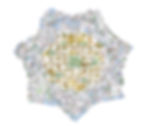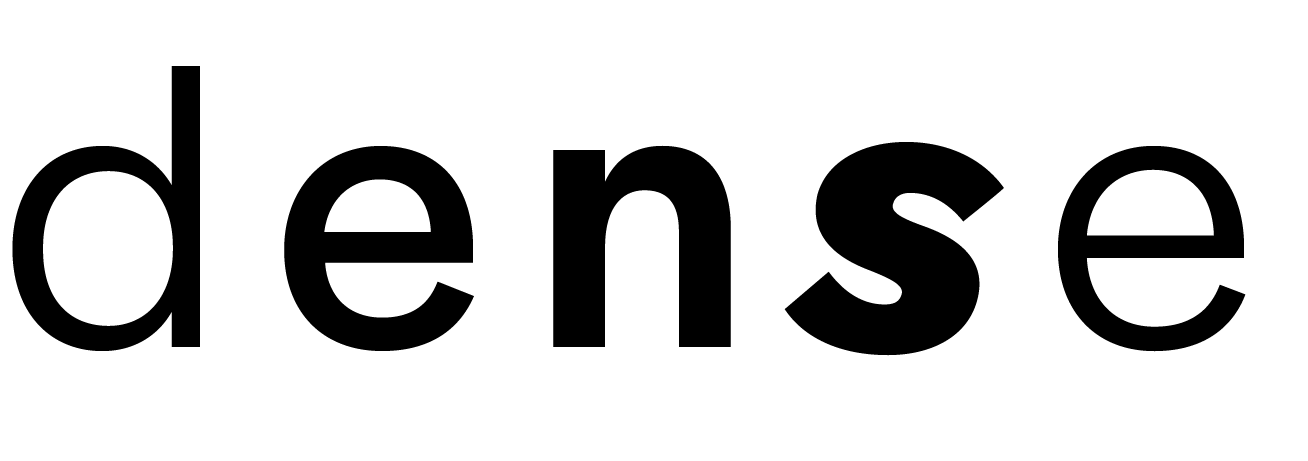Off The Map
- DesignShed Org
- Jun 5, 2022
- 7 min read
Ask artist and map fanatic Andrew Harrison for directions? He’ll tell you to get lost. Find out why and more cartographic twists in our Q&A.

Andrew Harrison, (new) jersey: brasilia, 2008. Digital print. 38 x 25 in. Courtesy of the artist.
Maps are tools that have opened the human race to all sorts of outcomes, from navigating the oceans and carrying out wars, to documenting new lands and finding pirate treasures. Over the course of many centuries and increasingly precise technologies, maps are now mundanely embedded into our everyday experiences. You might think that the magic of maps has all but worn off.
In his Issue 1 visual essay, “Next Exit, Utopia,” artist Andrew Harrison’s cartographic re-imaginations are here to say that maps will never lose their magic:
“Through an act of digitally-enabled fragmentation, I began to pull the city of New Jersey apart, bit by bit. Each of its 565 municipalities, towns, and villages sliced, diced, and rearranged into new maps the shape of utopian schemes spanning religious visions of gardens, gold coast Amazonian fever dreams, and the urban planner’s merciless grid system.”
With our minds blown and our preconceptions busted, it's time to sit down with Harrison for a Q&A about his love for maps, how they help him see new worlds and why we should go off the map every so often.
When’s the first time you looked at a map of NJ?
That had to be Ms. Angeloni’s 3rd grade class. She had these beautiful roll-up maps over the chalk board that she would pull down in between arithmetic lessons. I loved the muted color palette, the smell, and the fact that they would snap-up into a roll when she was finished. New Jersey was that little odd-ball state that I remember being fascinated by. I was very aware that the Delaware River to the west and the Atlantic to the east gave it its unique form. These are bodies of water that I had access to growing up, so I was attuned to all of these geographic and geological conditions. I also remember taking a bit of pride in the half-pint size of New Jersey. It lacked those sweeping and wide open western landscapes, it was a little survivor constantly getting squeezed by New York and Philly.
What do paper maps do differently for you than digital maps?
For me it's about time, as in the time I spend with them. Digital maps don’t lend themselves to exploration and getting lost as your finger moves across the screen. They are more pragmatic: A to B. Digital maps can jam in a lot of information, almost too much. Especially maps with digital layers, but these are also fascinating. You can create your own map by intersecting and combining different layers of information. That was a game changer for me. I remember when I could access GIS and remote sensing from my PC for the first time. I would spend hours toggling layers. With paper maps, you feel the map's creator. What they chose to include, exclude, and how they wanted you to think about the space and ultimately move through it. They’re fixed in one sense, but invite more speculation and imagination for me.
When I started working on the (new)jersey series of maps, it began with paper maps that I then digitized and cut-up in Photoshop. So I was moving between paper and digital. I wanted the look and nuance of a paper map, but the power and speed to manipulate them digitally. So the best of both worlds in that project.

Andrew Harrison, (new) jersey: garden of eden, 2008. Digital print. 38 x 25 in. Courtesy of the artist.
When was the last time you got lost?
The last time I got lost was in a parking garage. Not a structure humanity will be remembered for I am going to guess. After the 20 minutes it took us to actually find our car, on the way out we kept going down the ramps that were actually going up. It was a classic New Jersey car moment, just without the other driver to flip-off. That was last month, before that, it had to be DC. This is a city I’ve studied: with its L'etoiles, wide boulevards, and diagonals cutting across the grid. Looks great on a map, but driving one is pure chaos. When your GPS tells you to take the 5th exit off the roundabout, you know you're in trouble. When I am driving in New Jersey I really don’t get lost a lot, not because I have some sixth sense, but more like I feel that the Parkway, Turnpike, or Route 1 has got to be close. I take comfort in that.
What do you use as landmarks?
I’m not the “take a left at the Dunkin Donuts” type of guy. My landmarks tend to be more quirky elements in the landscape, like “that tree with crooked trunk “, the “orange house with the steep roof”, or “the rusted out ‘68 Nova in the lawn”. New Jersey is full of these strange roadside markers, and Dunkin Donuts of course. That said, it seems like wayfinding by landmarks is a bit of a lost art, which is a shame because they are great storytellers. That old car or tree is an object with a history that shapes a space in a cool way. I think the talking voice on the GPS should not call out exit numbers, but strange elements in the landscape instead. I think that would be more interesting.
Cartography was as much a documentation of a place as much as it was a speculation on how to get somewhere. Like Hansel and Gretel. How do you think we leave traces of where we’ve been in a digital world?
That’s what social media, in a really cool way, capitalized on. You can scroll someone's feed and get a good sense of how they are moving. These little digital breadcrumbs are more curated, and performative, at times, but help us to keep connected to our networks and their meanderings. I ride my bike a lot, and sometimes use Strava to track my routes and mileage. There is a huge social network around apps like this, so people are clearly interested in leaving a trace and learning about the movements of their peeps. For Hansel and Gretel, that was all about survival. For the contemporary traveler, it's more about dropping pins on a Google Map or “saving” a space we want to visit later, so there is a speculative element that’s also motivating our behavior.
[Image 1]: Subway Map. This map is made from converging two histories, one the fires that burned Paris during the Communes of 1871 and the other the Chicago fires of the same year. Chicago and Paris are burning.
[Images 2 and 3]: (new)chicago map. This map was made with an algorithm that combined the Etoiles of Paris with a map of Chicago. Convenient to navigate both Paris and Chicago.
Google Maps aims to make getting lost a thing of the past, and yet people are still losing their way. Are tech glitches a blessing in disguise or does this narrow our experience of the world?
I remember when my brother was getting married in Rhode Island in the early 2000s. This was at the leading edge of Google Maps, and pre-ubiquitous smart phones. So my father printed out directions for everyone and the suggested route was about two hours longer than I thought it should be from New Jersey. So this led into an interesting, let’s call it, “discussion” about the correct route, technotopias, and our over-reliance on computer algorithms. Let’s just say that I got to the wedding before my beloved father. I think glitches like that can be beautiful, especially if you are in the right mindset to have a different experience, but on balance our experience of the world can get narrowed by automated directions if we don’t take some steps to build in surprise and diversion into our daily routines. So I got to the wedding faster than my Dad, but maybe he had a more interesting trip.
There is a history of experimenting with tactics of getting lost from the Flaneurs, to the Dadaist, to Guy Debord and the psycho-geography of the Situationists. They were all trying to invent methods of subverting, what they viewed as, alienating landscapes. I’ve experimented with similar tactics in my own art practice, such as walking and drawing the route traveled by the Black inhabitants of Vanport, Oregon after the flood of 1948 and forced migration that resulted in the use of redlining tactics in northeast Portland. These migrants, although not traveling far, were off their map and traveling into uncharted and hostile territory. As my Google Maps keeps getting smarter and more accurate, I just have to remind myself to work a little harder at the everyday practice of keeping my experiences novel.

Image from a walk along the route that the all-Black residents of Vanport, OR, took after the levee wall (pictured) ruptured and flooded their homes. Photo by Andrew Harrison.
The Turnpike was characterized by its “Point A to Point B” connection logic, i.e. NYC to Philly, exit to exit, allowing for things in between to get lost in our consciousness. Does this map of connection fail us, and if so, how?
I work in New York City and my folks live in Philly, so I move back and forth between these two cities a lot. So for me the superhighway is great. Moving on a space like the Turnpike is almost something other than driving. I think it’s closer to the experience of flying, at least cognitively. You “wake up” and you’ve arrived, basically forgetting the last 50 miles you traveled. Only when your experience is punctuated by a traffic jam or breakdown do you actually begin to consider the landscape in a different way.
My old VW broke down on the turnpike once and my family and I waited roadside for about an hour for a tow truck. In the meantime, we pulled out some camping chairs and a soccer ball from the trunk . My wife lounged and read a book and the kids and I kicked the ball around. Turnpike as park! Moments like that make you reconsider the possibility of a space and it actually prompted me to start walking along the Turnpike right-of-way and documenting my experiences. That’s when I first came across a roadside deer-hunting stand. So the article in Dense issue 1 about Joe Lanza’s hunting along the turnpike could be traced back to my old VW.
Andrew Harrison is an artist, curator, and educator who has exhibited his sculptures, films, prints, and installations nationally. As a life-long New Jersey resident, the droning hum of the Turnpike has been a consistent reminder to keep moving forward.
Booth, Please is our weekly newsletter that explores the dreams, discoveries, confrontations, and epiphanies that emerge when design meets New Jersey — all set within the comforts of the world's diner capital. Subscribe below and cozy up every Sunday.












